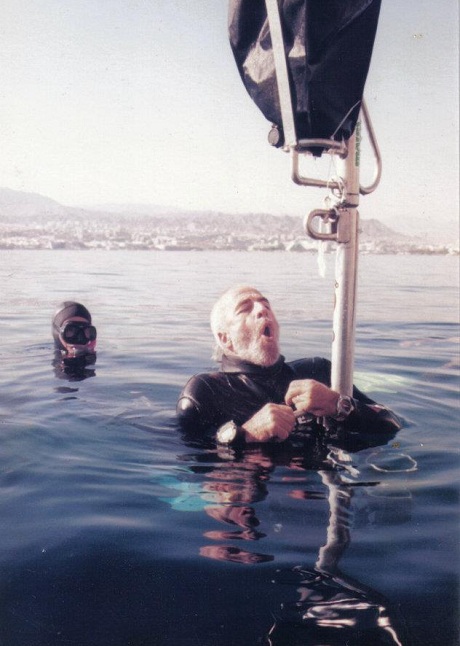 There have been several incidents, recently, of pulmonary barotraumas and even air embolism connected to the practice of “air packingâ€. Sufficient incidents are enough to raise concern.
There have been several incidents, recently, of pulmonary barotraumas and even air embolism connected to the practice of “air packingâ€. Sufficient incidents are enough to raise concern.
We cannot wait for formal experiments, to determine the degree of risk. This may take years before even a protocol can be designed for tests, we need to act now. At least paying attention, and approaching techniques that have an element of risk with a degree of caution.
Part of the trouble is that the general freediving public is becoming more aware of techniques practiced by the Elite few, without any awareness of the safety constrictions that they put upon themselves, or without any idea of how long it has taken them to get to their current level of physiological adaptation to this technique.
The better informed are beginning to realise that there is a difference between packing for depth and packing for the pool events. The objectives for the two of them are different, as are the results.
In the depth disciplines packing has advantages and disadvantages. The disadvantages are:
- Having to overcome more buoyancy during the beginning of the descent.
- Increased risk from Narcosis at depth -both of the onset of narcosis at a shallower depth and more severe narcosis at depth .
- Particularly in the sled disciplines at greater risk of DCS.
These disadvantages have to be weighted against the possible advantages of being able to take the mouthfill a little deeper, and thereby gaining a maximum of 5-6 mts.
Alexey Molchanov who packs in a up right position and says he packs no more than to achieve the same lung volume as a breath taken on dry land, and claims to be able to do the same depth without packing.
In the pool disciplines extreme packing seems to be, at the moment, producing results for those who can overcome the discomfort. The problem here is that the majority of freedivers do not have daily access to the sea and thus most of their training is done in the pool, and they tend to believe that what worked well in the pool must work well in the sea.
In their pool training a lot are packing to maximum capacity dry and are increasing with each session the number of packs in big leaps, i.e. from 10 packs to 20. Furthermore, in order to increase their vital capacity and reduce their residual volume they are using extremely forceful practices like stretching on a packed lung.
The dangers (see the incident report quoted by Rik Rösken) are concerned with –
- Stretching on a packed lung. This is a very extreme practice, that demands an excellent knowledge of stretching, and caution and the patience to work systematically and incrementally.
- Certain exercises done on reverse packs (dry) again caution and allowing time for physiological adaptation are required.
- Increasing the number of packs dramatically in dry training (ie. from 10 to 20 packs) (the lung has few nerves, thus when you feel it it might be too late).
- The risk of pulmonary barotrauma from over packing dry.
- Not testing for preconditions for a pulmonary barotrauma.
Other dangers are – packing has been sold as the secret of deep diving which it certainly is not. We see begginners packing for dives of 20–40 mts or 50 mts DYN, without understanding they get all the
disadvantages and none of the advantages of packing. Furthermore they are better off improving their equalisation techniques without packing.
The other problem is a miss – understanding of objectives, to make packing the tool for increasing your VC and reducing your RV, misses the point – to what end? This in itself is not an objective unless it is proven to increase your results. Then to pack how much? We have had one accident this year where overpacking on the surface led to an air embolism. Overstretched alveoli passed air bubbles directly into the blood stream. The result partial paralysis, the patient has difficult walking and talking to this day.
